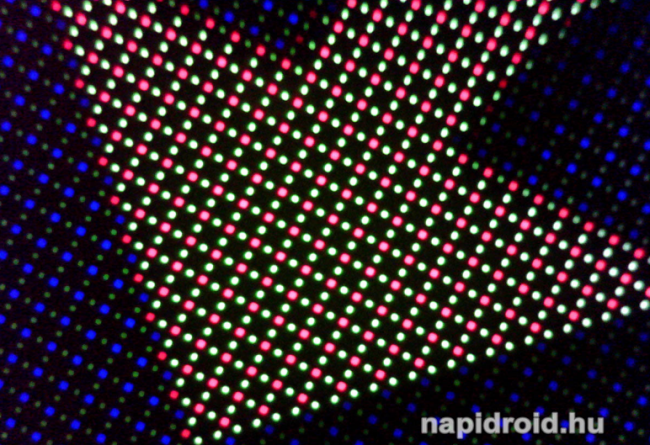One of the great virtues which premieres Samsung Galaxy Note 4 This year is the QHD screen 1440 x 2560 pixels resolution, which allows you to reach at your Super AMOLED panel a concentration of pixels per inch really big, which reaches 515 . It is not a world record, but it is really good.
The fact is that has appeared an interesting article in which we see a series of photographs taken microscopy screen Galaxy Note 4 and in them, you may find the explanation for this definition and the device’s ability to display images as vivid and well defined in its AMOLED screen.
As you know, many panels smartphones have a structure of pixels that are composed of three subpixels tiny they are capable of emitting red, green and blue lights. Well, Samsung in its PenTile panel for the Galaxy Note 4 what he has done is to change the organization of a structure shaped diamond subpixels, which include red and blue and then all around these nodes are those that emit green light.

That is, it is not possible to identify each pixel by its three subpixels but the organization is more diffuse and thus allows a higher concentration of pixels in less space. As you can see from the pictures, the basic structure screen Galaxy Note 4 seems constructed of diamonds, or diamonds, where the subpixel colors are chained together to show a greater amount of information. This placement is the secret of the many ‘pixels per inch’ (dpi) that the ‘phablet’ Samsung has brought its 5.7 “screen.
By the way This is not an innovation of the Galaxy Note 4 because Koreans have been using for quite some generations of smartpohnes. Specifically, the Galaxy S4 already included but later both the Galaxy Note 3 S5 as did small variations that have been corrected again in this AMOLED panel to replicate the formula of top-end of 2013.
Source: PhoneArena
No comments:
Post a Comment